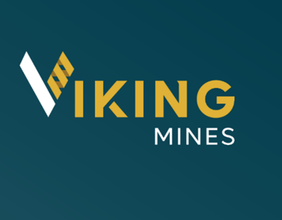Given the changing dynamics in the global energy market, how businesses access and consume energy can be complicated. Geopolitical conditions, regulatory pressures, and market demand can create scenarios that can affect business operating costs and stability.
One option that many businesses are evaluating is the adoption of renewable energy sources, with potential benefits ranging from brand enhancement to cost resilience. While renewables may not be the right fit for every organization, understanding the available incentives and market drivers can help inform strategic energy decisions.
To better understand today’s energy landscape, it’s helpful to explore how renewable energy incentives have developed over time, and what they might offer businesses evaluating their energy strategies.
This blog provides an overview of key financial opportunities and operational considerations, including tax breaks, long-term cost savings, and potential brand positioning benefits, to support informed decision-making about renewable energy investments.
Understanding Renewable Energy Incentives and Their Evolution
The global push towards renewable energy has prompted governments worldwide to introduce incentives that support businesses in adopting sustainable energy sources. Tax credits, grants, and rebates have become instrumental in making renewable energy more accessible and financially feasible for organizations of all sizes.
The origins of incentive programs
The groundwork for renewable energy incentives began in the 1970s, as the oil crisis steered the conversation toward the need for energy alternatives. The 1978 Energy Tax Act in the U.S. was a foundational policy that introduced tax credits for solar and wind investments. Meanwhile, in Europe, countries like Germany and Denmark launched Feed-in Tariff (FIT) programs in the 1990s, offering businesses fixed payments for renewable energy production. These FIT programs provided a reliable revenue stream, encouraging companies to invest in solar and wind technologies by guaranteeing consistent returns.
These early initiatives helped build the foundation for the renewable energy market by making adoption more financially attractive, sparking a ripple effect of innovation and further investment worldwide.
How incentives have evolved over time
As global awareness of climate change has grown, renewable energy incentives have been adapted to drive adoption at scale, supporting a range of technologies beyond solar and wind, and aligning with global climate agreements like the Paris Accord.
Key examples of today’s expanded incentives include:
- Investment and Production Tax Credits (ITC and PTC) – United States: The ITC allows businesses to deduct up to 30% of renewable energy project costs, while the PTC, primarily for wind energy, provides credits based on energy produced. While President Donal Trump’s Unleashing American Energy executive order paused clean energy-related federal disbursements, this does not currently impact these tax credits.
- European Green Deal (EU): Launched in 2019, this initiative provides grants and funding for businesses adopting renewable energy to help Europe reach its target of net-zero emissions by 2050. Companies can apply for funds to support renewable projects across industries, making adoption accessible and cost-effective.
- Canada’s Clean Technology Investment Tax Credit: Canada’s federal government offers a tax credit for businesses investing in clean technologies, including solar, geothermal, and battery storage systems. This program supports renewable energy adoption as part of Canada’s climate strategy.
- Japan’s Green Investment Promotion Program: To support its decarbonization goals, Japan offers financial incentives such as subsidies and low-interest loans for companies investing in renewable energy, particularly in solar and hydrogen.
Today, businesses have access to a broad spectrum of tax breaks, grants, and credits that reduce the initial costs of renewable energy adoption. These include federal incentives, state and local programs, and international initiatives, making renewable energy projects more financially accessible and appealing.
Key Takeaways
The landscape of renewable energy incentives has evolved significantly over the past several decades, offering businesses a range of opportunities to explore sustainable energy sources. While each organization’s path to renewable energy adoption may differ based on operational needs, market conditions, and regulatory environments, understanding the financial tools available—such as tax credits, grants, and rebates—can support informed decision-making.
As energy markets continue to shift, staying aware of evolving policies and incentives can help businesses assess whether renewable energy aligns with their broader strategic goals. Whether the priority is cost management, risk mitigation, or contributing to broader sustainability objectives, having a clear view of available resources ensures that companies are well-positioned to evaluate all their energy options.
Questions? Our team is here to help you get answers. Reach out today!




